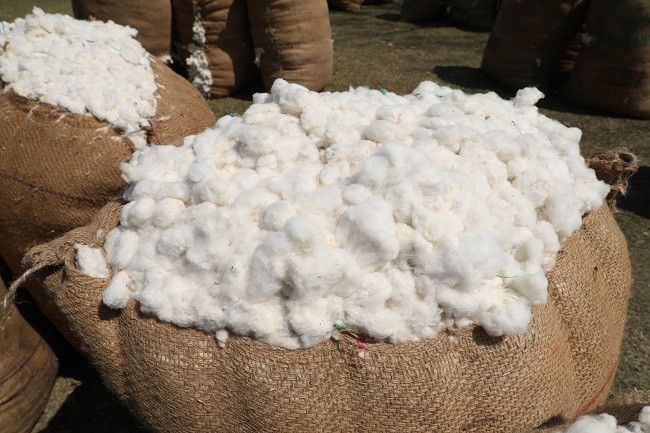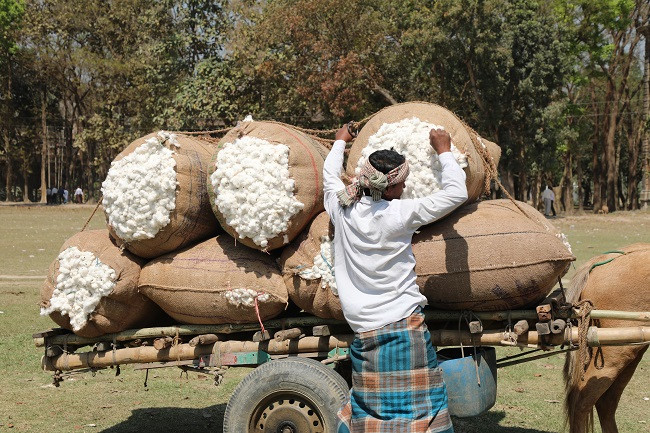October 7 is celebrated globally as World Cotton Day. This year the theme of the day is “Weaving a Beautiful Future for Cotton.”
The World Cotton Day is dedicated to showcasing cotton’s incredible versatility. While cotton is a staple in the textile industry, it also plays a crucial role in animal feed, medical supplies, and even the production of edible oil.
This year World Cotton Day marks the 5th anniversary of this international event, which honors one of the most widely used plants — cottonseed and cotton fiber being its most notable products.

Notably, cotton is unique among crops. First of all, we get fiber from the seed. Besides, more than five million tons of cotton seeds are produced in the world every year as a by-product. From cottonseed, we get edible oil and ghee. Khail is used as cattle and fish feed.
The idea for World Cotton Day originated from the Cotton Four nations—Burkina Faso, Benin, Chad, and Mali—and other cotton-producing countries in Africa, aiming to promote cotton by-products and their markets.
The United Nations General Assembly officially recognized October 7 as World Cotton Day on August 30, 2021. It has been observed since 2019 to highlight the global importance and significance of cotton.
By recognizing the greater economic and social impact of cotton worldwide, the United Nations declared World Cotton Day and included it in the United Nations permanent calendar. Since then, every year on October 7, World Cotton Day is celebrated to highlight the importance of cotton worldwide.
Since then, the purpose of World Cotton Day has been to create jobs in Least Developed Countries (LDCs) – an opportunity to highlight its role in maintaining economic stability, promote sustainable trade policies and enable developing countries to benefit from every stage of cotton production.
More than 100 million households are directly involved in cotton production and produce 25-26 million tons of raw cotton, with an average of about 800 kg of fiber cotton produced per hectare.

Cotton is produced in more than 75 countries of the world. It is a poverty-relieving crop – employing people in the least developed countries of the world. It is the only agricultural product that provides both fiber and food. Cotton can also be grown in dry, arid and salinity land – something that is not possible with other crops.
To increase the use of cotton, increase demand, inform people about the benefits and value of cotton, create positive media coverage for cotton around the world, get support from government representatives of important cotton countries, and involve the UN and the UN and world, are also the objectives of celebrating the cotton day.
Through World Cotton Day, every stakeholder like cotton production, ginning, spinning, garments, brands or retailers, consumers, academics, researchers, media workers, NGOs and government authorities can realize the importance. Producers produce cotton, use cotton in ginning spinning and garments, and produce cotton products, brands or retailers influence cotton choice decisions.
The cotton crop is perfectly suited to tropical and temperate regions of the world. Overall cotton occupies only 2.1 percent of the world’s arable land and yet fulfills 27 percent of the world’s textile sector.
More than seventy countries in the world’s tropical and temperate regions grow cotton on 33–35 million hectares each year—2.5 percent of the world’s cultivated land.
In Bangladesh, about 80-85 lakh bales of fiber cotton are required annually for the 450 yarn mills in the textile sector – the bulk of which is met by imports from abroad and this demand is increasing.
About taka 25-30 thousand crore have to be spent every year to import this amount of cotton.
At present, only three percent of the total demand can be met in our country, the remaining 97 percent of cotton has to be imported from abroad. 5000 Garments and other sectors of ready-made garments directly involve about 5 million people. Considering these, World Cotton Day is very important for Bangladesh. In the fiscal year 2022-23, 46.99 billion US dollars were earned from the textile sector. Moreover, 84% of our foreign exchange earnings come from the garment sector.
The demand for cotton is expected to increase exponentially in the future. This increase in demand will increase the need for sustainable cotton.
On the other side, the use of pesticides in conventional cotton production worldwide pollutes the environment. So sustainable cotton production is the best solution to this problem. Sustainable cotton must be produced by reducing the use of hazardous chemicals and using less water.
This will increase farmers’ income and reduce poverty. Sustainable cotton production has started in Bangladesh in collaboration with Cotton Connect.
















